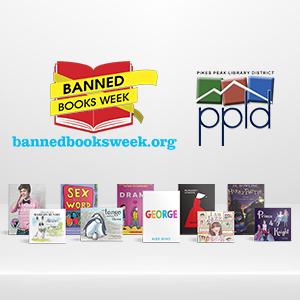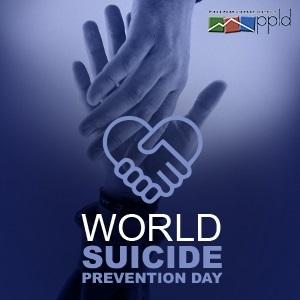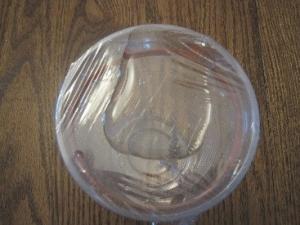Categories
Books Unite Us. Censorship Divides Us. “I’m offended”….”How can I explain this to my kid?”….”This isn’t what I believe”….The idea that books that present these challenges should be taken off of the shelves, and the opposing assertion that all knowledge should be available to everyone, is the foundation of librarians’ favorite holiday week: Banned Books Week, Sat., Sept. 26 - Sat., Oct. 2.
Programs and PPLD Resources
Teens Eat: Book-tasting Get ready to sample books and snacks! You will be introduced to four different Banned Books that will each be paired with a related snack. Child and Young Adult Reading List
Banned Books
When you read a book or watch a movie, ever think to yourself “I’m offended” or ”How can I explain this to my kid?” or ”This isn’t what I believe”? Those thoughts are common and every library has something that offends someone. Banned Books Week is about keeping materials available for all – even if they offend someone. The American Library Association honors this tradition by taking the time to educate us all on intellectual freedom. Banned Books Week launched in the 1980s after a rise in challenging and banning controversial materials (including Hop on Pop, by Dr. Seuss).), In short, this is your right to read whatever you want, whether someone else agrees with it or not. So this Banned Books Week, go out and explore without limitations! Read the books that you want to read and find the information that you want to know whether it’s offensive, different, scary, magical, or anywhere in between!
The Top 10 National List The ALA Office for Intellectual Freedom tracked 156 challenges to library, school, and university materials and services in 2020. Of the 273 books that were targeted, here are the most challenged, along with the reasons cited for censoring the books:
- George by Alex Gino
- Reasons: Challenged, banned, and restricted for LGBTQIA+ content, conflicting with a religious viewpoint, and not reflecting “the values of our community”
- Stamped: Racism, Antiracism, and You by Ibram X. Kendi and Jason Reynolds
- Reasons: Banned and challenged because of author’s public statements, and because of claims that the book contains “selective storytelling incidents” and does not encompass racism against all people
- All American Boys by Jason Reynolds and Brendan Kiely
- Reasons: Banned and challenged for profanity, drug use, and alcoholism, and because it was thought to promote anti-police views, contain divisive topics, and be “too much of a sensitive matter right now”
- Speak by Laurie Halse Anderson
- Reasons: Banned, challenged, and restricted because it was thought to contain a political viewpoint and it was claimed to be biased against male students, and for the novel’s inclusion of rape and profanity
- The Absolutely True Diary of a Part-Time Indian by Sherman Alexie
- Reasons: Banned and challenged for profanity, sexual references, and allegations of sexual misconduct by the author
- Something Happened in Our Town: A Child’s Story About Racial Injustice by Marianne Celano, Marietta Collins, and Ann Hazzard, illustrated by Jennifer Zivoin
- Reasons: Challenged for “divisive language” and because it was thought to promote anti-police views
- To Kill a Mockingbird by Harper Lee
- Reasons: Banned and challenged for racial slurs and their negative effect on students, featuring a “white savior” character, and its perception of the Black experience
- Of Mice and Men by John Steinbeck
- Reasons: Banned and challenged for racial slurs and racist stereotypes, and their negative effect on students
- The Bluest Eye by Toni Morrison
- Reasons: Banned and challenged because it was considered sexually explicit and depicts child sexual abuse
- The Hate U Give by Angie Thomas
- Reasons: Challenged for profanity, and it was thought to promote an anti-police message
Check out challenged titles at PPLD.
Pikes Peak Library District (PPLD) believes in freedom of information for all and does not practice censorship. The selection of Library materials is predicated on the patron's right to read and freedom from censorship by others. Library materials may be controversial and any given item may offend some person. Selections for the Library are made solely on the merits of the material, in relation to the development of a collection that serves the needs and interests of a diverse population. Community members are always welcome to submit a reconsideration request form for Library materials. Please see our Challenge Materials Policy for more information.
September highlights suicide prevention. The booklist link below has good resources for parents and children.
See also: https://nationaltoday.com/world-suicide-prevention-day/
Take and Makes for this project will be available at area PPLD libraries beginning Friday, Sept. 3, 2021.
Supplies and Directions:
Materials we provide: Plastic cup, plastic sandwich bag, rubber band
Materials you provide: scissors, water, interesting specimens to observe
Directions (see pdf link below for additional step-by-step photos):
- Cut a hole in the side of the cup along the bottom. This doesn’t need to be neat. It’s designed as an access point for you to get specimens into the bottom of your cup.
- Stretch one layer of the plastic bag over the top of the cup and secure it with a rubber band.
- Find a specimen and put it in your cup through the hole. (A specimen is an insect, leaf, flower, etc.)
- Pour a small amount of water onto the plastic wrap. You want it to be a small pool.
- Look through the water at your specimen. The water has created a lens and magnifies your specimen.
- Repeat with other specimens.
How it works: A microscope uses mirrors and lenses to bend light so that an image appears larger than it is. In our microscope, the water creates a convex lens. It bends the light that passes through it and makes the specimen appear to be bigger.





